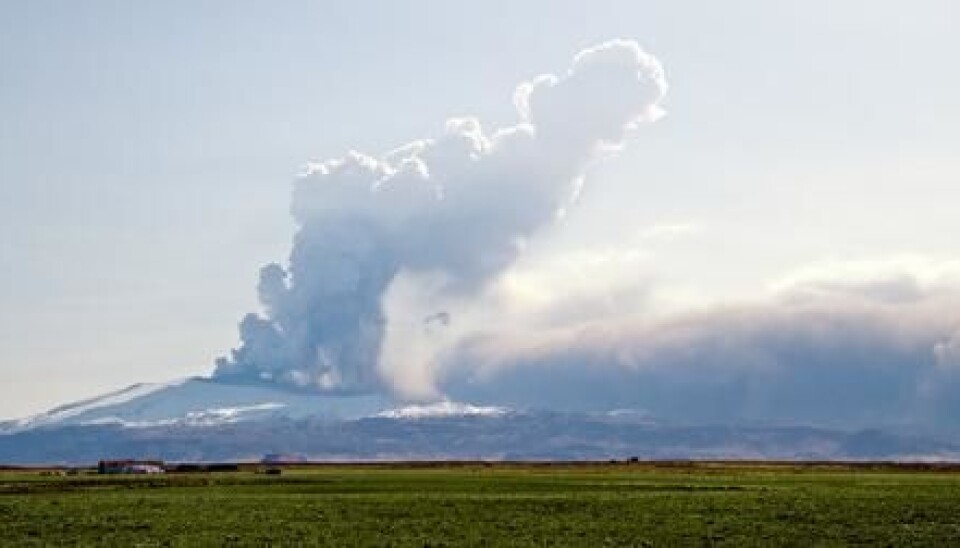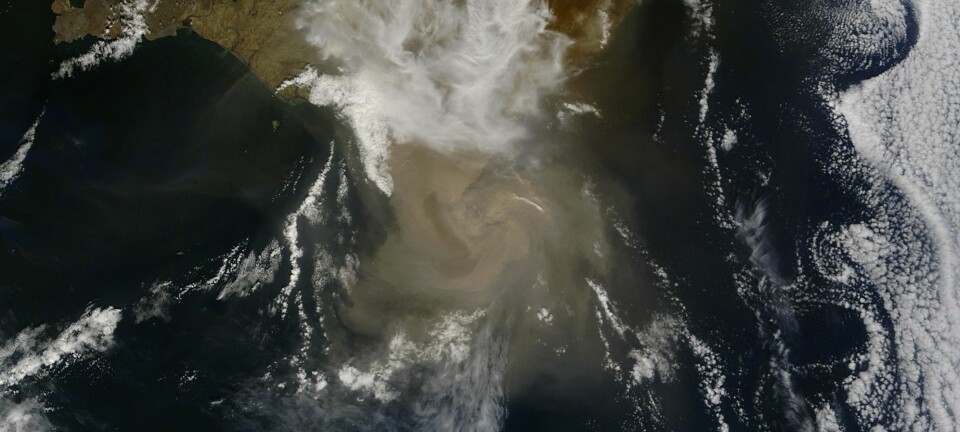
Sun-kissed sulphur reveals volcanic effects on climate
Remains from the most powerful volcanic eruptions were branded by the sun before they ended up buried under the polar ice. This discovery enables scientists to find out when the volcanoes controlled the climate.
In 1601, the climate suddenly grew a lot colder. The cooler climate was provoked by a violent volcanic eruption, which spewed out large amounts of sulphur dioxide.
High up in the atmosphere, this sulphur dioxide transformed into tiny droplets of sulphuric acid, which covered our planet in a dense fog. The sun’s rays could not penetrate this fog, temperatures fell and the summer was gone.
Volcanic eruptions can cool down our climate – something that’s happened many times throughout history. But just how much they can cool down the climate and when exactly this took place is still a topic of heated debate among historians, glaciologists and archaeologists.
All these disagreements may however soon be solved as a group of Danish and Japanese atmospheric chemists have come up with a trick for decoding which cooling periods were caused by volcanic eruptions.
The sun is the main character
The researchers discovered the new trick by examining volcanic sulphur in long ice cores that had been drilled up from the Greenland ice sheet.
They found that the sulphur compounds from volcanic eruptions that have managed to affect the climate have a characteristic quantitative ratio between the four variants – isotopes – of sulphur.
This signature is fostered by a special chemical process, which the researchers have now succeeded in mapping. The process uses the sun’s intense ultraviolet light as its key player.
“This ‘fingerprint’ can be used for identifying those volcanic eruptions that have cooled down the climate through the ages. We can use this knowledge to improve on historical records that up to now haven’t been very reliable. Some were written down long after the event took place. Others relate to calendars from a foreign culture. Chemistry, on the other hand, does not lie,” says Matthew S. Johnson, an associate professor at Copenhagen University’s Department of Chemistry, who was one of the researchers behind the new study.
Sulphuric acid clouds stay put
It has long been known that a volcanic eruption can only cool down the climate if it’s sufficiently powerful to shoot sulphur dioxide all the way up to the stratosphere. Up there the sulphur dioxide is converted into clouds consisting of tiny sulphuric acid droplets, which typically hover on for years and reflect incoming sunlight back into space.
The sulphur dioxide that only reaches up to the troposphere, on the other hand, turns into sulphur compounds, which after a short while disappear from the atmosphere with the rain.
In other words, the high-flying gas clouds from the most powerful volcanic eruptions spend more time in the stratosphere’s intense sunlight, which slowly but surely alters the chemical signature of the sulphate. The sunlight changes the weighting of the various sulphur isotopes in accordance with highly precise rules.
By cutting an ice core into thin slices and measuring layer for layer the ratio between the various sulphur isotopes, it is now possible to obtain a highly accurate picture of whether a given eruption was powerful enough for the gas cloud to shoot all the way up to the stratosphere.
For the first time ever, the researchers can now distinguish between whether the eruption affected the global climate or whether it only had local consequences.
“The climate is affected by many different factors,” says Johnson. “Man is one of them; volcanoes are another. With this new method we can compare the extent to which man has affected the climate in relation to the volcanoes.”
Settling the dispute
The research team has so far not had the chance to test the method on any of the much discussed volcanic eruptions.
They do, however, predict that the method can for instance be used to study what actually happened when the Mediterranean island of Santorini exploded around the year 1645 and took down the entire Minoan civilisation with it.
The year 1601 has been called ‘The Year Without a Summer’, and the researchers are keen to find out which volcano was responsible.
Also up for heated debate is the question whether there was an eruption in Iceland in the year 527.
All these disputes may well come to an end when scientists start using the sulphur-isotope method to squeeze out information from the ice cores.
------------------------------
Read the Danish version of this article at videnskab.dk
Translated by: Dann Vinther





